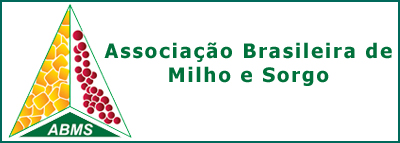CONSÓRCIO MILHO-BRAQUIÁRIA COM DENSIDADES POPULACIONAIS DA FORRAGEIRA NO CENTRO-SUL DO BRASIL
DOI:
https://doi.org/10.18512/1980-6477/rbms.v17n1p157-167Keywords:
Zea mays, Urochloa, cultivo consorciado, plantio direto.Abstract
RESUMO - O trabalho foi realizado com o objetivo de avaliar a produtividade de grãos e de massa de milho, solteiro e consorciado com populações de plantas de duas espécies de Brachiaria para formação de palha ou pasto. Utilizou-se o delineamento experimental em blocos ao acaso, com parcelas subdivididas e quatro repetições. As parcelas principais foram constituídas pelas espécies de Brachiaria (Brachiaria brizantha cv. Marandu e Brachiaria ruziziensis) e as subparcelas, pelas populações de Brachiaria (0, 5, 10, 20 e 40 plantas m-²), em linhas espaçadas de 0,45 m. Os tratamentos consorciados apresentam maior acúmulo de massa seca total do que o milho em cultivo solteiro. O máximo rendimento total de massa seca foi observado entre 10 e 12 plantas m-2 de B. ruziziensis, mas com maiores populações de plantas de B. brizantha. A produtividade de grãos teve redução linear de 13,39 kg ha-1 por planta m-2 de B. brizantha e redução quadrática média de 42,04 kg ha-1 por planta m-2 de B. ruziziensis.
Palavras-chave: Zea mays, Urochloa, cultivo consorciado, plantio direto.
INTERCROPING MAIZE-BRACHIARIA WITH FORAGE PLANT POPULATION IN THE MID-SOUTH OF BRAZIL
ABSTRACT - The objective of this study was to evaluate the grain and dry matter yield of maize, sole and intercropped with four plant populations of two Brachiaria species. We used the experimental design of randomized blocks, with split plots and four replications. The main plots consisted of the Brachiaria species [Brachiaria (sin. Urochloa) brizantha cv. Marandu and Brachiaria ruziziensis] and subplots consisted of the Brachiaria populations (0, 5, 10, 20 and 40 plants m-²), in same lines spaced 0.45 m. The intercrop treatments have higher total dry matter accumulation than maize monocrop. The maximum total yield dry mass was observed between 10 and 12 plants m-2 B. ruziziensis, but with a large population of plants B. brizantha. The grain yield had linear reduction of 13.39 kg ha-1 per plant m-2 B. brizantha and average quadratic reduction of 42.04 kg ha-1 per plant m-2 of B. ruziziensis.
Keywords: Zea mays, Urochloa, intercrop, cropping systems, no tillage.
Downloads
Published
How to Cite
Issue
Section
License
Authors retain copyright and grant the journal right of first publication with the work simultaneously licensed under the Creative Commons Attribution License that allows the sharing of work and recognition of the work of authorship and initial publication in this journal.
Authors are able to take on additional contracts separately for non-exclusive distribution of the version of the paper published in this journal (eg, in an institutional repository or publish as a book), with acknowledgment of its initial publication in this journal.
Authors are permitted and encouraged to post their work online (eg, in institutional repositories or on their website) at any point before or during the editorial process, as this may leadto productive exchanges, as well as increase the impact and citation of published work.



